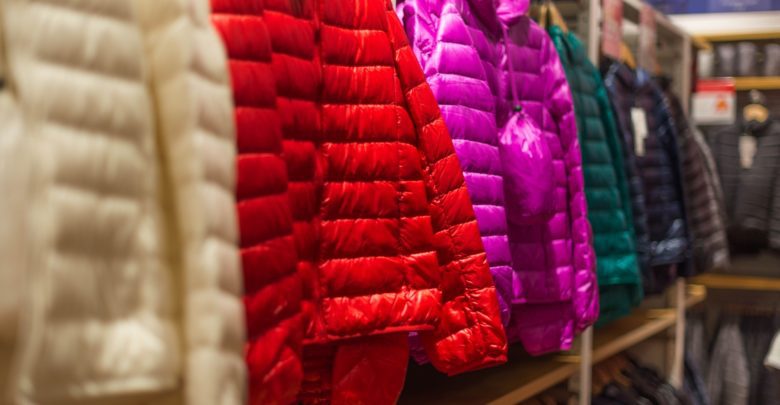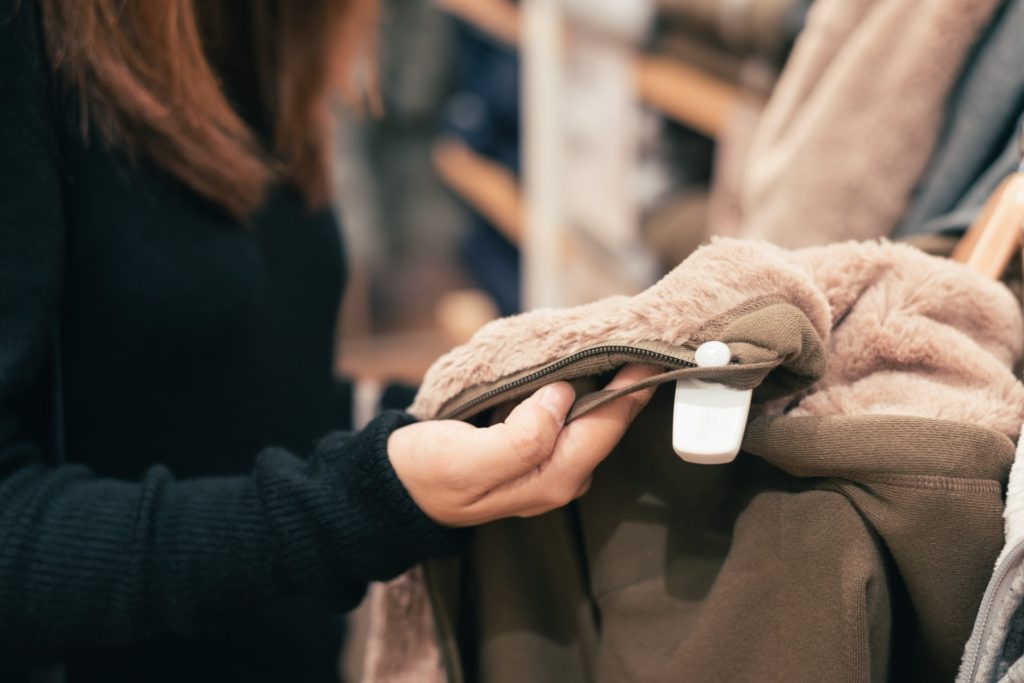Nudge Theory: Can we use it to create sustainable change in fashion and retail, one nudge at a time
By Esther Sitali

I believe there is a huge responsibility for our retailers to incorporate more ethical and sustainable brands, materials, and methods.
Because, how can we the end consumer participate in global change if it is not accessible to us? The more we – the general public, look for ways to include sustainable products into our daily lives the better, however, this would inevitably mean active participation from retailers and brands.
We all know that changing the fashion industry is going to take far more than stacking retail shelves with the odd ethical and sustainable brand.
But recently, I came across a rather interesting behavioral economy theory, which I thought may lend some help to retail giants and fashion houses, it is a theory that has been used by governments when trying to spearhead cultural and behavioral habit shifts to the general public in order to help make the public conform, to new thinking and new behaviors.
It is called, ‘The Nudge Theory’, a theory from behavioral science, which I think can help when discussing sustainable fashion and retail, because many retailers and brands, have in theory pledged their allegiance, to greener more sustainable businesses, but in practice have taken their time. Which I like, many suspect could be due to the fact that these businesses are concerned not all consumers would be willing to buy into sustainability as much as they profess on social media.
Having read about this, The Nudge Theory, I am now very interested in how behavioural economy can help achieve global goals in the Fashion industry through retail partnerships.
Since hearing about the work of Richard Thaler, who was just awarded the 79th Noble Prize for Economics. I am convinced that the Nudge Theory can be applied to the Fashion industry to create positive sustainable change.
It is called, ‘The Nudge Theory’, a theory from behavioural science, which I think can help when discussing sustainable fashion and retail, because many retailers and brands, have in theory pledged their allegiance, to greener more sustainable businesses, but in practices have taken their time.
So what is this The Nudge theory?…
The Nudge theory is a concept that combines behavioral science, political theory, and economics and proposes positive reinforcement and indirect suggestions to try to achieve non-forced compliance to influence the motives, incentives, and decision-making of groups and individuals. The claim is that nudges are at least as effective, if not more effective, than direct instruction, legislation, or enforcement. The concept has influenced British and American politicians. Several nudge units exist around the world at the Federal level (UK, Germany, Japan, and others) as well as at the international level (OECD, World Bank, UN).
Richard Thaler, the co-author of the book Nudge: Improving Decisions About Health, Wealth, and Happiness and the Nobel Prize-winning economist says, it’s not about creating mandates but actually about getting people to make ‘better’ personal and social decisions through a little nudging.
In the book, Richard Thaler and co-author Cass Sunstein describes the concept as
‘A nudge, as we will use the term, is any aspect of the choice architecture that alters people’s behavior in a predictable way without forbidding any options or significantly changing their economic incentives. To count as a mere nudge, the intervention must be easy and cheap to avoid. Nudges are not mandates. Putting fruit at eye level counts as a nudge. Banning junk food does not.’
Just as an example, the UK government created a recycling scheme where they introduced two separate bins, one for regular waste and another for recyclable materials. It was not mandated to use both bins, but the general public has over time used the bins for their separate waste. This is a perfect example of nudging behavior change. It was not mandated nor legislated but presented to us, the general public, just like putting fruit at eye level it makes it easier for us to adopt and adhere to this new behavior.
The Nudge Theory is a powerful way to influence behaviour. And at the dismal state that fashion is at, it is high time for behavioural shifts, particularly with how, what and when we buy. Because consumption of unsustainable fashion has far reached its peak.
The Nudge Theory is a powerful way to influence behavior. And at the dismal state that fashion is at, it is high time for behavioral shifts, particularly with how, what, and when we buy. Because consumption of unsustainable fashion has far reached its peak.
There is no denying fast fashion, has led to a very broken fashion system, through overconsumption of fashion and compulsive shopping. This extreme demand, and quick turnaround from fashion companies and retailers, have contributed to the outright neglect of ethical standards for their manufacturers and artisans in developing countries, where much of the fast and luxury fashion is produced. Coupled with wage decreases and work pace increases, the demand for fast fashion has left many workers producing in conditions that fall well below standard, and much closer to dangerous working levels whilst receiving in compensation, wages which are also far below the living wage.
Just take a look at the recent world cup, as an example, while major sponsors, Nike and Addidas wrestled it out for the most teams sponsored, by writing FAT cheques to the football teams, like the German football team who recently signed a contract that handsomely paid them $76.7 million per year to wear Addidas, their garment workers in Indonesia (where 80% are female) were sewing these pieces together for barely $250 a month.
Over-consumption has also presented the rather obvious problem of over-production, The New York Times recently reported that, global retail giant H&M was sitting on a 4.3 billion dollar mountain of unsold inventory. I mean what level of unsustainable madness is this?
By the way, that is enough clothes to dress an entire nation!!!

Clearly, at this stage, methods must urgently be adopted to correct the wrongs taking place in fashion, and if systematic nudging can change the way we consume, and the way we recycle our garments then let’s give it a good go. If fruit at eye level can nudge people to make a better decision to eat more healthily then what about placing ethical and sustainable products in shop window displays, or at the forefront of racks in store? Would there be an increase in sustainable fashion, fashion that can be recycled, fashion that doesn’t deplete our natural resources, would or could the easy reach of ethical clothes on retail shelves lead to a better more ethical supply chain?How about nudges in the form of, creating in-store ‘buy-back’ schemes, to tackle the mountains of discarded clothes? John Lewis the UK retailer has recently started a clothing buy-back programme. A scheme, which doesn’t demand but rewards customers for bringing back their garments, is one method that can surely be applied to other stores and brands.
It’s time to put our heads together and nudge our way to a more sustainable, ethical fashion industry, by creating goal-specific nudges. I think little nudges can lead to reaching big industry goals.
Sustainable incentives and positive reinforcement may just change the way consumers buy into fashion and what they do with garments after use.
Could behavioral science present fashion with some answers to change consumer habits and industry practices?
Nudge Theory FAQs
What is the nudge theory?
The nudge theory is a concept in behavioral economics and psychology that suggests subtly influencing people’s behavior can lead to positive outcomes. It involves designing choices and environments in a way that nudges individuals toward making desired decisions without restricting their freedom of choice.
What is an example of nudge theory?
An example of the nudge theory is placing healthier food options at eye level in a cafeteria while placing less healthy options on lower shelves. This small change in the environment nudges individuals to choose healthier food without explicitly forbidding or limiting their choices.
What is the nudge theory of human behavior?
The nudge theory of human behavior proposes that individuals can be guided toward making better choices through subtle, indirect interventions. By understanding human biases and tendencies, such as the tendency to opt for defaults or follow social norms, nudges can be used to encourage desired behaviors without coercion.
What are the steps of the nudge theory?
The steps of the nudge theory typically involve:
- Understanding the context: Identifying the specific behavior or decision you want to influence.
- Mapping biases and influences: Analyzing the cognitive biases, social influences, and environmental factors affecting the behavior.
- Designing nudges: Creating interventions that gently steer individuals towards the desired behavior while still allowing freedom of choice.
- Testing and refining: Implementing the nudges and evaluating their effectiveness. Refinement may involve iterating on the design based on feedback and results.
Note: The steps may vary depending on the specific application and context of the nudge theory.




